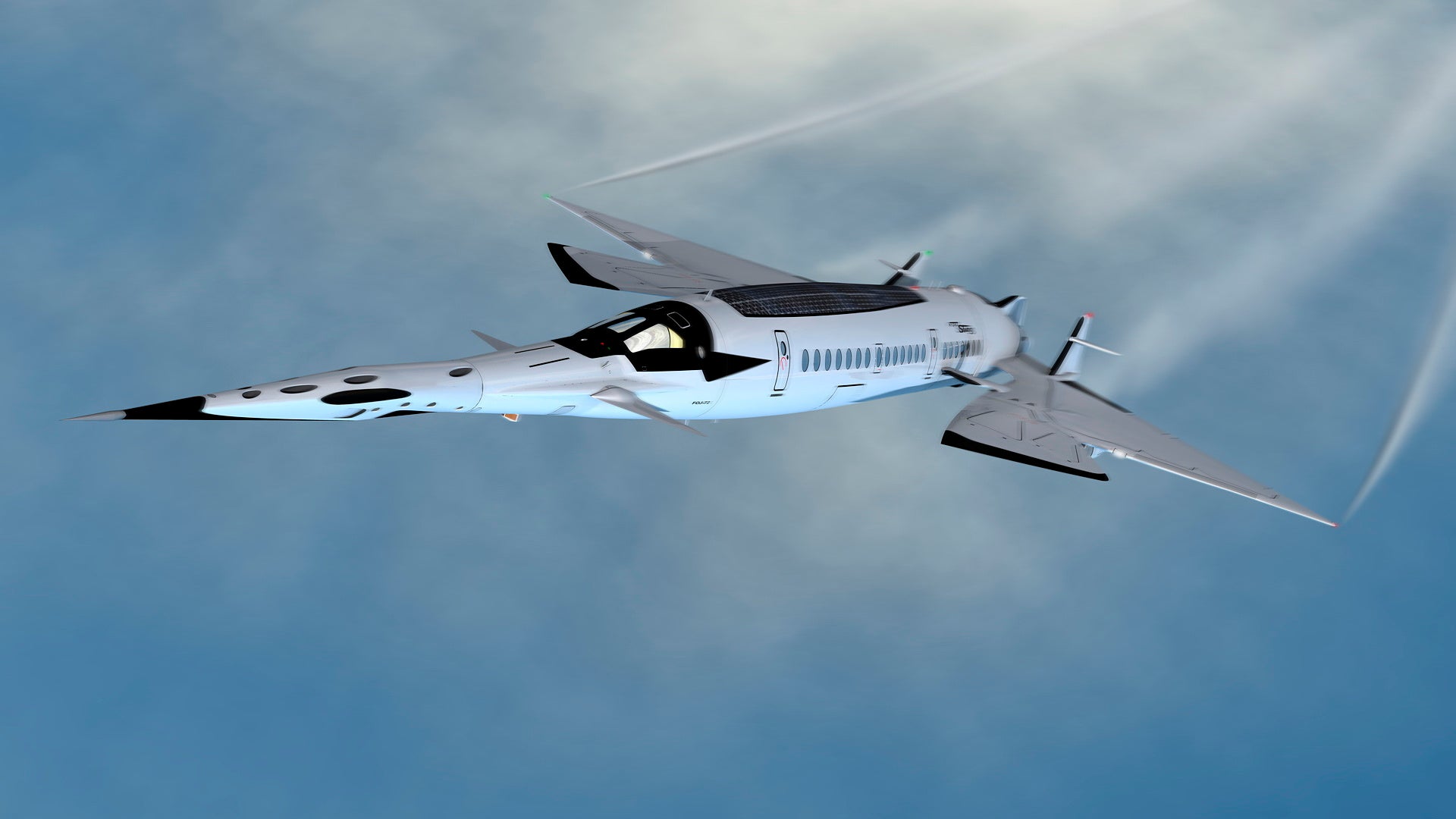The jet that could get you from London to New York in 80 minutes
Spanish aviation designer Oscar Viñals has designed the aircraft to fly at three times the speed of sound
Your support helps us to tell the story
From reproductive rights to climate change to Big Tech, The Independent is on the ground when the story is developing. Whether it's investigating the financials of Elon Musk's pro-Trump PAC or producing our latest documentary, 'The A Word', which shines a light on the American women fighting for reproductive rights, we know how important it is to parse out the facts from the messaging.
At such a critical moment in US history, we need reporters on the ground. Your donation allows us to keep sending journalists to speak to both sides of the story.
The Independent is trusted by Americans across the entire political spectrum. And unlike many other quality news outlets, we choose not to lock Americans out of our reporting and analysis with paywalls. We believe quality journalism should be available to everyone, paid for by those who can afford it.
Your support makes all the difference.A nuclear-powered high speed plane could be heading to the market, which would allow passengers to fly from London to New York in 80 minutes.
The “Hyper Sting” is a new aircraft design by Oscar Viñals, a Spanish industrial and concept designer, which would fly at three times the speed of sound.
The striking name is inspired by the jet’s pointed design.
Viñals said: “The fuselage would have the shape of a ‘big sting’ with a very sharp ‘nose’, that would have the function to control the front airflow (pressure/speed), in order to redistribute it over the central part and over the wings.”
The Hyper Sting has not yet been put to the test, but the designer claims it could reach a maximum speed of 2,664 mph. This is more than four times faster than the average aircraft, which reaches speeds of 460 to 575 mph.
The Hyper Sting design is 328 feet long, with the capacity to carry 130-170 passengers in total - and a trip from London to New York, usually seven to eight hours long, would be cut to just over an hour.


The “cold fusion nuclear reactor” which would power the jet is currently just a concept, but Viñals plans for the aircraft to reach a Mach 3.5 capability, and be able to power four next generation hybrid turbojets and two ramjet engines.
Currently, the record holder for the fastest flight from London to NYC is Concorde, which operated passenger flights between 1976 and 2003.
Concorde, which was used by British Airways and Air France, could fly 100 people from London to New York in just under three hours.
Hyper Sting’s designer, Viñals, said of Concorde’s downfall: “Concorde was a brilliant piece of machinery, a noble experiment, but it put too many emissions in the environment, too much noise into our communities, and was too expensive to operate.”
His vision for the Hyper Sting is for it to become a blueprint for the future of commercial airplanes, claiming that “a new era of supersonic flight might be just around the corner”.
But he admits it could be some time before it reaches our skies, adding: “Supersonic flights will return, but in this case due to some very innovative systems, like the cold fusion reactor, the date of a possible production would be over 2030 and the cost would not be cheap.”







Join our commenting forum
Join thought-provoking conversations, follow other Independent readers and see their replies
Comments